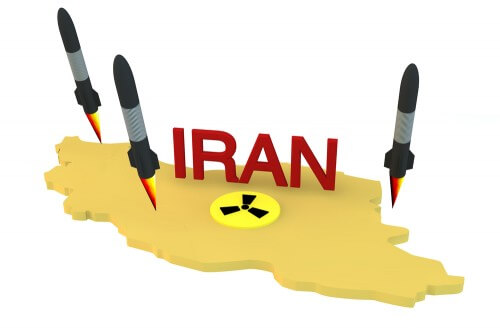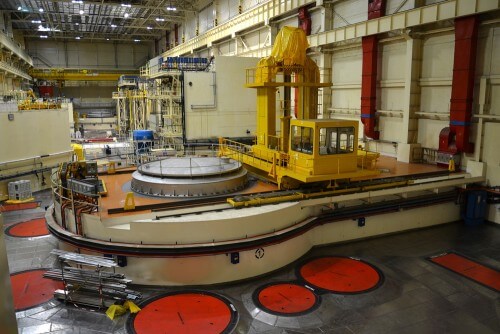A guide to the basic terms of the nuclear world following the signing of the agreement between the world powers and Iran regulating its activities in the nuclear field

What is a foundation?
Everything that exists in the universe consists of combinations of less than 100 basic substances, called elements. Water, for example, is a compound of the elements hydrogen and oxygen. Table salt is a compound of other elements: sodium and chlorine. The basic unit of every element is the atom, and every atom (almost) consists of three types of smaller particles: protons and neutrons, which reside in the nucleus, and electrons, which surround it. The number of protons in the nucleus determines the type of element: oxygen has eight protons in the nucleus. If we subtract one, it will no longer be oxygen, but nitrogen. If we add a proton to the nucleus of an oxygen atom, it will become fluorine (yes, it's from the toothpaste).
What is a radioactive element?
Most of the elements around us are very stable, but occasionally it happens that their core just disintegrates, for no particular reason. A nucleus of polonium for example (the substance that the Palestinians claim Israel poisoned Arafat with), contains 84 protons, but occasionally it emits two protons, with additional particles and radiation, and turns into a lead atom, with 82 protons. Such decay is known as radioactive decay. Polonium is an example of a highly radioactive substance - if we take 5,730 kg of polonium, within three minutes only half a kg will remain in our hands - the rest will turn into lead (minus the emitted particles). In contrast, if we take XNUMX kg of carbon, XNUMX years will pass before half of the material decomposes. That's why scientists use the carbon concentration test to determine the age of archaeological finds.
isotopes
As mentioned, the number of protons in the nucleus of an element is always constant. The number of neutrons, on the other hand, can vary. Carbon, for example, always has 6 protons in the nucleus, but sometimes it has six neutrons (then it is called carbon 12, i.e. 6+6), seven neutrons (carbon 13) or eight (carbon 14 - it is used for dating in archaeology). Each such different form is called an isotope. Isotopes of a certain element have identical chemical properties, but they differ in physical properties, such as weight, and most importantly - in the stability of the atomic nucleus. There can be two isotopes of the same substance, one of which is very stable, and the other is very radioactive.
What is a nuclear reaction?
There are substances whose core is very stable, but if you add something to them, this stability is undermined. This is, for example, the situation in the nucleus of uranium 235. It contains 92 protons and 143 neutrons. However, if one more neutron is added, the nucleus splits in two, and the uranium decays into two other elements: barium (56 protons) and krypton (36). In this process three more neutrons are released as well as a lot of energy (in the form of gamma radiation). If there are many other atoms of uranium 235 near the fissile atom, there is a probability that one of the released neutrons will hit their nucleus, and fission it. Again three neutrons will be released, again there is a chance that they will split nuclei of nearby atoms, etc. It's a nuclear chain reaction, and if there's enough fissile material (ie, uranium 235), the amount of energy it releases can be enormous, and a nuclear explosion will occur.
What is uranium enrichment?
Uranium is a naturally occurring metal that can be mined from the ground. About 99.2% of the uranium in nature is uranium 238. It is one of the most stable materials that exist: until half of the material decays, about 4.5 billion years will pass, which is roughly the age of the Earth (and indeed uranium is used in the dating of the oldest rocks). Only about 0.7% of the uranium in nature is the fissile isotope, 235. If you want to produce a nuclear bomb, you must get a higher concentration of uranium 235 - in a process called enrichment. The common method of enrichment is heating the uranium ore until it evaporates into gas. This gas is put into a centrifuge - a cylinder-shaped device that rotates at enormous speed, and separates the isotopes according to their weight: as in a merry-go-round, the heavier one is thrown out, and a higher percentage of uranium 235 remains in the center. After each operation, the material is collected from the center, and run through another centrifuge. If you repeat the process thousands of times, you gradually get a material with a higher percentage of uranium 235 in it.
How does a nuclear reactor work?
A nuclear reactor is a facility where the fission reaction is carried out in a controlled manner, without causing a nuclear explosion (if there are no malfunctions, of course). Most reactors use the heat generated from the energy released in the reaction to generate electricity. Research reactors direct the released neutrons so that they hit the nuclei of certain elements, turning them into more radioactive isotopes, which are used in medicine and research. To produce electricity, it is sufficient to enrich uranium to a level of about 5% (ie 95% uranium 238 and 5% uranium 235). Research miners need an enrichment of 10%-20%. Nuclear weapons usually require uranium enriched to a degree of 90% or more.
What is plutonium?
Plutonium is an element slightly heavier than uranium (it has 94 protons), but unlike it, it does not exist in nature (except for very small amounts that are naturally formed in uranium). In the 40s, scientists discovered that it was possible to produce plutonium in a nuclear reactor, by adding protons to uranium nuclei. The plutonium produced was used in the second nuclear bomb that the USA dropped on Japan in World War II (the first was a uranium bomb).

What is heavy water?
Like many other elements, hydrogen also has several isotopes. Normal hydrogen has only one proton in the nucleus, no neutrons, and it makes up 99.99% of the hydrogen in nature. There are very few hydrogen atoms with a neutron in the nucleus (deuterium), and sometimes even with two neutrons (tritium). As mentioned, a water molecule consists of an oxygen atom and two hydrogen atoms. If most of the hydrogen atoms in water are deuterium, the water is called "heavy water". The heavy water has a variety of uses, but in terms of the context relevant to us, it optimizes the nuclear reaction. As we said, in the chain reaction, three neutrons are emitted with each fission of a uranium nucleus. Many of these neutrons are very fast, and exit the nuclear material without causing any reaction. The heavy water slows them down, so a reaction that takes place in heavy water is more efficient (the same energy can be obtained with a smaller concentration of fissile material). Also, heavy water plays an important role in the process of producing plutonium from uranium.
What is a hydrogen bomb?
In a hydrogen bomb, a process opposite to that of nuclear fission takes place. You take two hydrogen atoms, and push them so close to each other that you get a nucleus of helium. This process, known as nuclear fusion (or fusion) releases enormous energy, even greater than that of fission. However, in order to push two nuclei so close to each other, a huge amount of energy must be invested. Therefore, a hydrogen bomb starts with a "normal" nuclear explosion, caused by fission, and it creates the heat and pressure conditions that allow nuclear fusion to take place.
How is all this related to the agreement with Iran?
The agreement allows Iran to enrich uranium up to a level of 3.67% (that is, quite far from the level needed to produce weapons), and forces it to reduce its stockpile of enriched uranium to a low level in its possession. Also, Iran is required to reduce the number of centrifuges and settle for the old generation ones. These are all steps that should harm its ability to enrich uranium for a bomb. Another important point is the issue of the supervision of the military facilities. There is not enough enriched uranium or plutonium to make a bomb. It is necessary to build a very complex mechanism of fissile material and conventional explosive material, which will allow, on the one hand, to hold the bomb safely, without starting a nuclear reaction, and on the other hand, to control the explosion itself with great precision. All of this should be assembled in a suitable package for the intended use, such as an arrowhead of a ballistic missile. All of the experiments in these areas are apparently carried out by Iran in accordance with military standards that are not directly related to the nuclear industry.
Do you have any more questions? Contact us: ettaynevo@gmail.com

2 תגובות
Great explanation for the layman.
The alleged agreement does slow down Iran's progress towards a bomb. The problem is that in light of the Iranian whistleblower on previous agreements, international law and the many lies they were caught in, it is hard to believe that they will actually honor the agreement, and this is exactly where the problem lies. The agreement is written in such a way that it makes it very easy for the Iranians to continue developing the nuclear in a covert manner and makes it very difficult for the powers to prove a breach of contract.
In 2005, an agreement was signed between the United States and North Korea, in which Korea undertook to dismantle its nuclear program. Bush's speech was very reminiscent of Obama's speech.